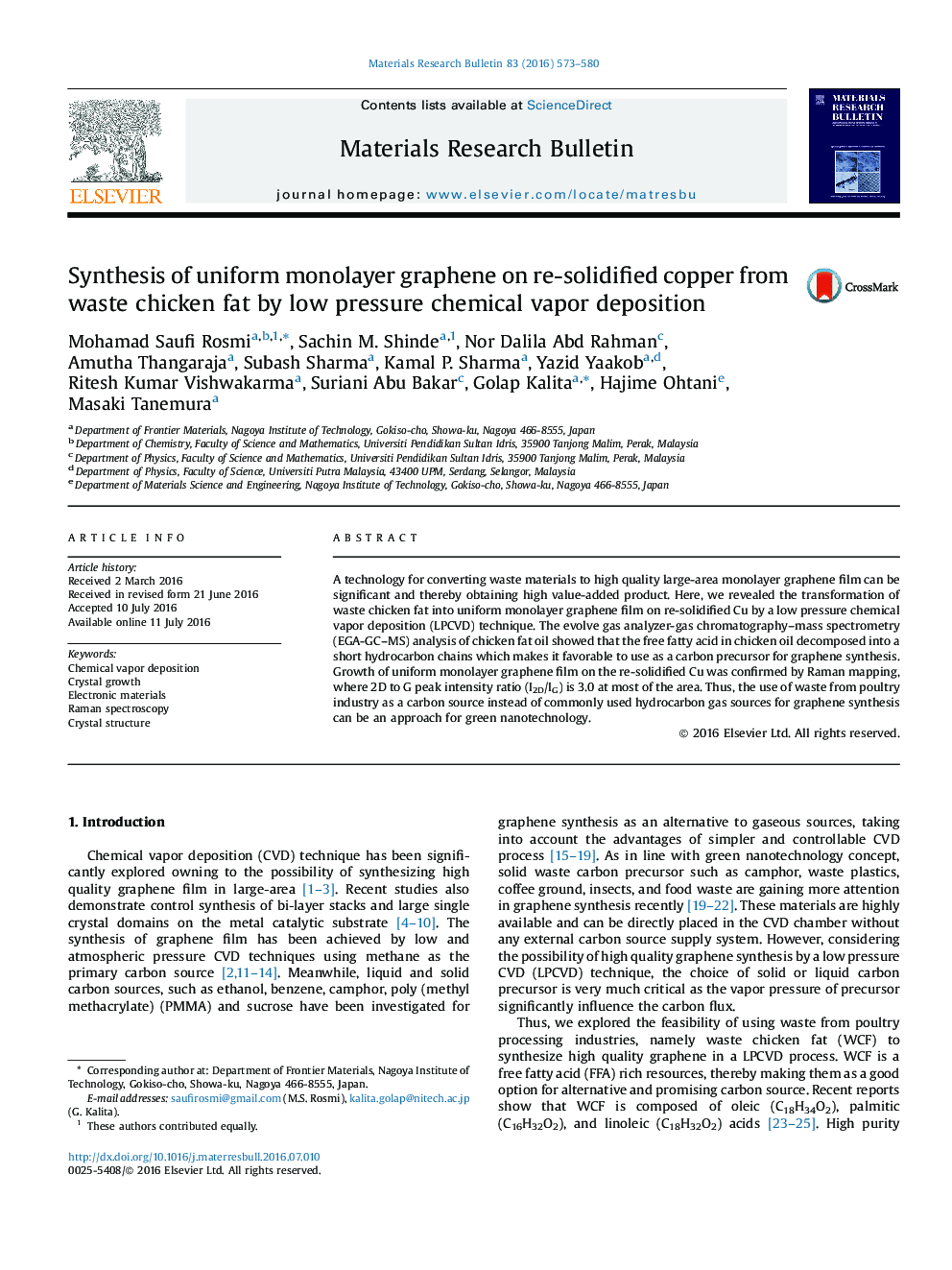| Article ID | Journal | Published Year | Pages | File Type |
|---|---|---|---|---|
| 1487069 | Materials Research Bulletin | 2016 | 8 Pages |
•Uniform monolayer graphene on re-solidified Cu substrate using waste chicken fat is demonstrated.•The waste chicken fat containing fatty acid can decompose into a short hydrocarbon chains.•Re-solidification process of Cu by annealing provides big grains of Cu (111) facet with smooth surface.•Less wrinkles formation in the monolayer graphene on the smoother Cu surface was achieved.•Fabrication of transparent electrode with low sheet resistance was achieved with the graphene film.
A technology for converting waste materials to high quality large-area monolayer graphene film can be significant and thereby obtaining high value-added product. Here, we revealed the transformation of waste chicken fat into uniform monolayer graphene film on re-solidified Cu by a low pressure chemical vapor deposition (LPCVD) technique. The evolve gas analyzer-gas chromatography–mass spectrometry (EGA-GC–MS) analysis of chicken fat oil showed that the free fatty acid in chicken oil decomposed into a short hydrocarbon chains which makes it favorable to use as a carbon precursor for graphene synthesis. Growth of uniform monolayer graphene film on the re-solidified Cu was confirmed by Raman mapping, where 2D to G peak intensity ratio (I2D/IG) is 3.0 at most of the area. Thus, the use of waste from poultry industry as a carbon source instead of commonly used hydrocarbon gas sources for graphene synthesis can be an approach for green nanotechnology.
Graphical abstractFigure optionsDownload full-size imageDownload as PowerPoint slide
